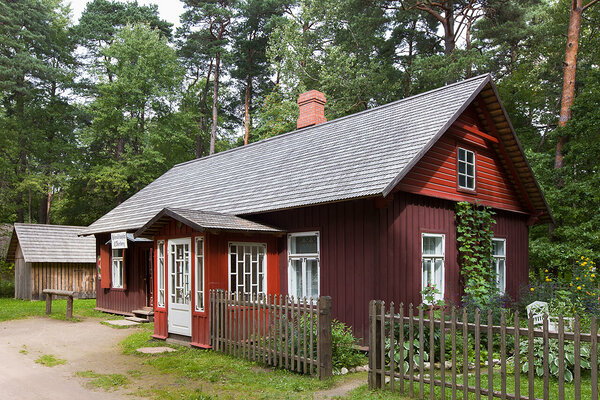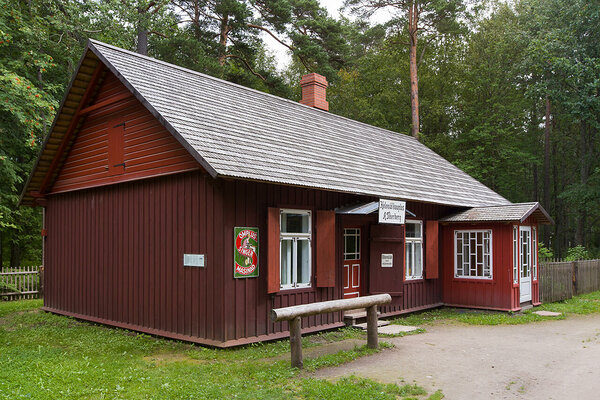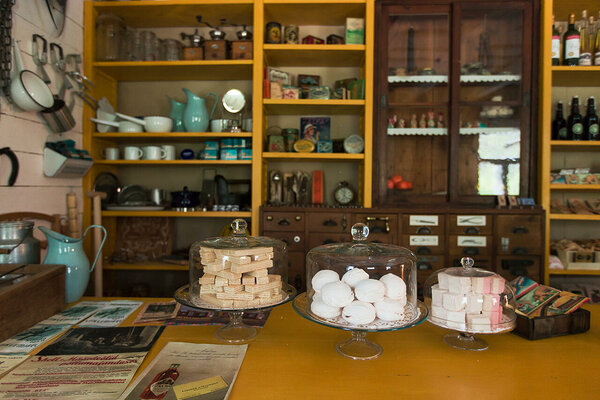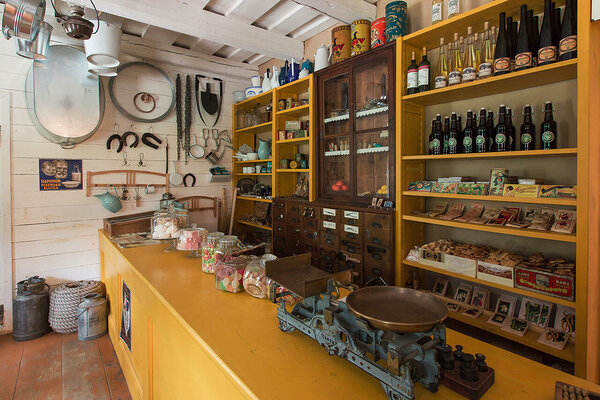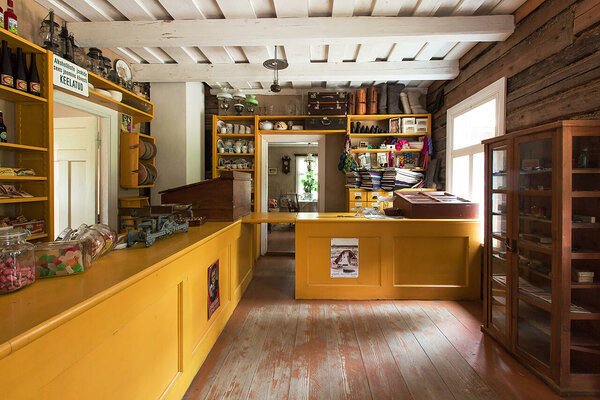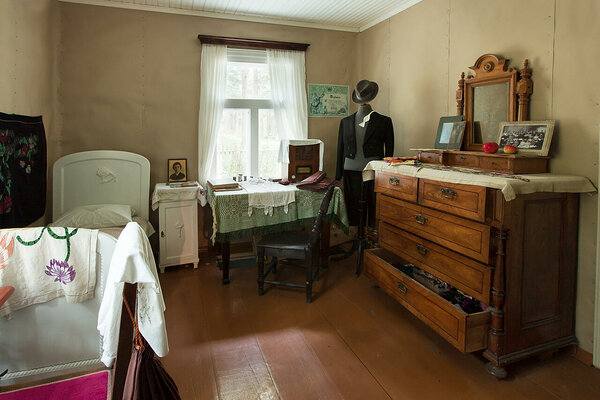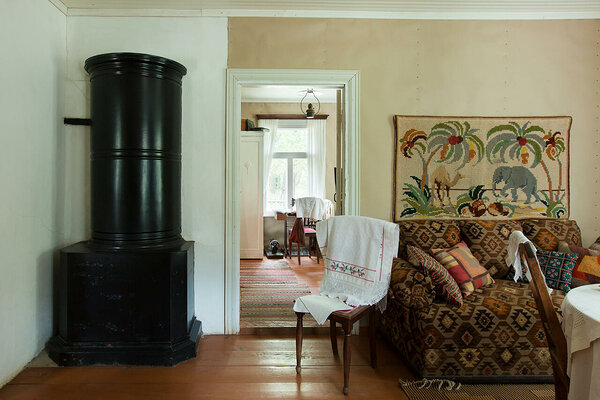Brought from Lau village of Juuru parish, Harju County. The shop building with rather a conventional floor plan was constructed in 1914 by Jaan Meiberg, a distiller from Ingliste manor. Brought to the museum in 1999 and opened for visitors in 2012.
Shops started emerging here and there in rural settlements in the last quarter of the 19th century when country population’s demand for bought-in goods increased. By the beginning of the 20th century the network of village shops had been established. Apparently the shop was there in the tsarist era, and it certainly operated from 1925 to 1940, when the Soviet rule was established. The museum display refers to 1938, the period when Estonia’s economy flourished. Visitors can travel back in time here, buying goods characteristic of that time in history.
The Lau shop building, a rather small one, was located at the crossing of the roads from Ingliste to Keava and Kaiu. In addition to the front room and the storage, it housed the shopkeeper’s quarters: three rooms and a kitchen. On the 2.5 lofstelles (1 ‘Tallinn lofstelle’ equalled 0.18 ha) land plot received from the neighbouring Otsa farm there also was an outbuilding which contained a storehouse and a shed for a cow, a couple of sheep and a pig.
As the floor plan and the location of the building show, Jaan Meinberg was planning to start a shop and actually could have run it for a while. The list of property compiled after his death in 1921 states that there was counter, scale and a tin shop sign, but no goods.
The shop building was inherited by his second wife, Anna Pauline Meinberg, nee Tikerberg. The front room and several dwelling rooms were leased out since 1925 (the shop apparently ceased operation for the period of the great economic recession around 1929–1930). Since 1934, the shop was run by Pauline Meinberg and her daughter Alice Tikerberg. It was around then that the building was weatherboarded and painted, and a tin sign reading ‘Koloniaal-kauplus A.Tikerberg’ (Colonial goods shop A. Tikerberg) was hung above the door.
This typical general store of the period sold all kinds of goods: kerosene, salt and sugar, tea, cocoa, coffee, raisins, rice, sweets and herring, but also perfumed soap, threads, buttons and needles, lamp glass and wicks, cookware, tobacco and cigarettes, rope, harness, shoe polish, dentifrice, post cards and fabrics. In 1935 shops holding a class III commercial certificate were allowed to sell beer and local wines as well.
Farmyard plan
Did you know?
- In the middle of the 19 century salt, iron, tobacco and herring would still be bought from the manor or through the inn-keeper; sewing supplies, books and other sundries were sold by travelling vendors.
- Lau shop had a nickname of “Dirt shop” as was located in a low spot that was constantly muddy.
- The shop also sold eggs, caraway, poultry etc. Pauline organised cooking workshops for local women, too.
- Commercial agents travelling around the country to advertise brand products played a certain part in the development of the choice of goods in the shop.
- In 1938–1939 the back room of Lau shop was rented out to a tailor’s family, and the kitchen was used by both families. It was the tailor who owned the first radio ever to appear in the village.
